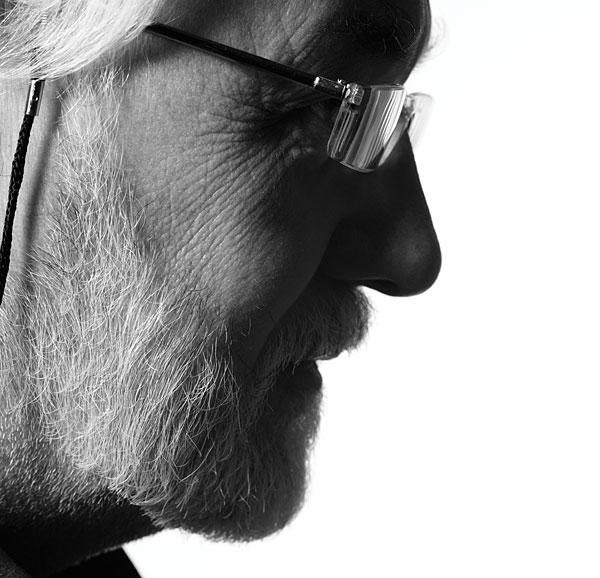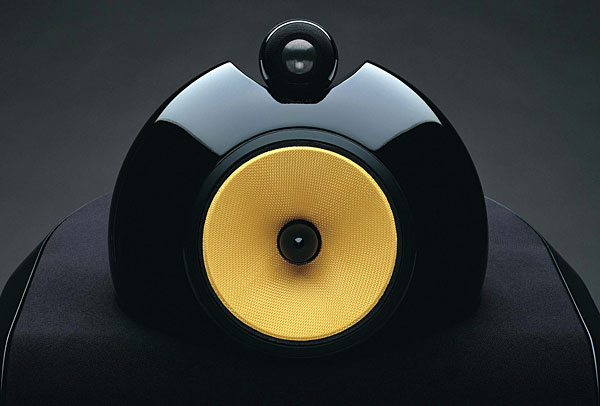| Columns Retired Columns & Blogs |
great interview!
thanks from Chile! :)

Dibb was interested in composite materials, and proved just the right student for a tutor who'd set up a cutting-edge research project focusing on them. Because the project also allowed him to work at various research establishments around the UK, it proved too attractive to turn down. A few years into Dibb's first job, in aerospace, another irresistible offer came along, this one from a maker of high-fidelity loudspeakers, and Dr. John Dibb made a career move that proved highly beneficial, for himself and for countless owners of the systems he's worked on in the ensuing decades.
David Lander: We should begin by saying that you recently retired after 27 years with Bowers and Wilkins, where you were the lead designer on systems as significant as the Matrix 800, the Silver Signature, and the Signature Diamond.
John Dibb: I retired from full-time employment with B&W in April [2013], although I still have a flexible contract and will be helping out from time to time, mainly providing sales and marketing support.
Lander: Saltaire, where you grew up, was built along the Aire river in the mid-19th century by a textile-manufacturing tycoon, Sir Titus Salt. Did you live in the historic section?
Dibb: I was born within the original village, but as a child lived just outside. Interestingly, when my dad retired, my parents moved to a house within the historic site, and as a student I stayed with them for a while. It was only then that I appreciated what Titus Salt had achieved. Yes, it was industrial, but with many delightful touches, such as mill chimneys disguised as Venetian campaniles, and rowing boats available on the river.
Lander: How traditional was the Bingley Grammar School of your era? Was it anything like the movie versions of English private schools—which are, of course, called public schools there?
Dibb: There were some similarities to the old public school image that appears in films, such as strict adherence to uniforms, and the division of the school into houses named after school beneficiaries. But it was also a mixed [coeducational] school—boys and girls—unlike the typically all-boys establishments, and it was free, so it was talent rather than money that gained a person entry.
Lander: Your father was also in electronics.
Dibb: He was trained as a cabinetmaker, but through a self-taught knowledge of electronics—tube electronics—he spent World War II and some years after in that field. My parents were keen dancers and listened to band music, mainly on the radio, and we were always fiddling with the amplifiers and speakers to try to get a better performance. I was soldering and building simple tube circuits in my father's workshop by the time I was around eight years old. I was in the church choir, and l loved listening to the organ—still do—so the pursuit of bass was a major driving force. I acquired and dismantled a two-manual reed organ, powered it with an old vacuum cleaner, and then amplified the sound using a small amp and ex-cinema, 15", mains-energized speaker. Heaven! This interest continued right through student years, and I made a few extra pounds building and selling speakers, but at that time I hadn't contemplated audio as a career.

Lander: How did you find your way to B&W?
Dibb: My first job, in 1973, was with an aerospace company, making a wide range of rocket motors, but my strong interest in music and music reproduction continued. A good friend had joined Wharfedale, and was supplying me with some units and a bit of design info. In 1977, he informed me that they were looking for someone with more advanced materials knowledge. How could I not go for interview? I got the job, and worked mainly on drive-unit designs for four years, until the company got into financial difficulties.
As luck would have it, Tannoy were looking for an engineer, and I was able to move there in 1981. I had much greater freedom, and over the next five years introduced a number of smaller domestic models, as well as the first Westminster, and the first range of black-box pro speakers. In 1986, another close friend from Wharfedale days informed me of a senior engineering post at B&W, a company I had great respect for, and I moved there in April of that year.
Lander: When your career in audio began, what speakers were your reference standards?
Dibb: I think the KEF 105 and B&W 801 probably led the way, although Wharfedale were already pioneering laser measurement techniques and more advanced materials and engineering, and producing excellent drive-units.
Lander: John Bowers died in 1987. Did you work directly with him?
Dibb: For around a year and a half. John was always closely involved in all the projects. He loved music, and he offered much in the way of engineering input. He also emphasized the importance of extensive listening, often taking prototypes home with him.
Lander: What was the B&W design process like when you arrived, and how has it changed?
Dibb: In the late '80s, having far fewer models than we currently have gave us time to explore every aspect of a particular design, virtually without limit. As the number and types of models have increased, it has been necessary to increase personnel, of course, and to introduce three-dimensional computer-aided design and fast prototyping equipment in order to maintain the necessary development steps whilst reaching production status earlier. We retain the ability to explore every avenue and maintain our original no-compromise philosophy.
Lander: You sent me a list of your B&W projects that includes about four dozen models—you note it's "by no means exhaustive"—and said you spent an average of 20 weeks on each of them. Which projects were the longest?

great interview!
thanks from Chile! :)